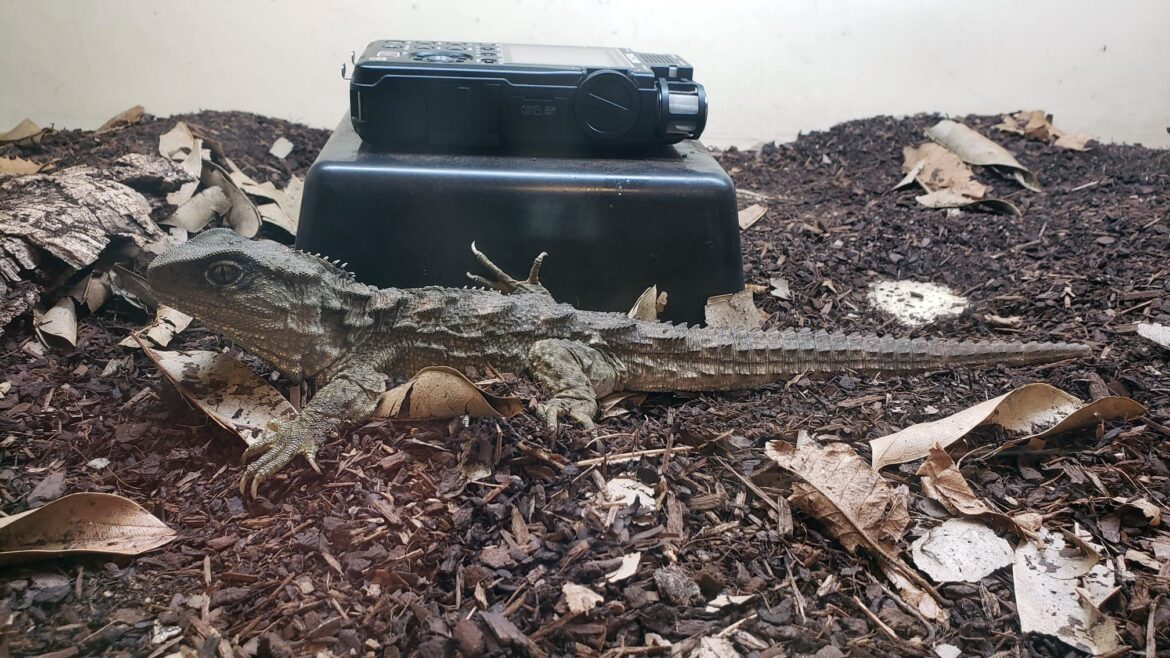ETSU fossil discovery reveals giant ancient salamander, Dynamognathus robertsoni
A giant, strong-jawed salamander once tunneled through ancient Tennessee soil.
And thanks to a fossil unearthed near East Tennessee State University, scientists now better understand how it helped shape Appalachian amphibian diversity.
The giant plethodontid salamander now joins the remarkable roster of fossils from the Gray Fossil Site & Museum.
The findings appeared in the journal Historical Biology, authored by a team of researchers from the Gray Fossil Site & Museum and ETSU: Assistant Collections Manager Davis Gunnin, Director and Professor of Geosciences Dr. Blaine Schubert, Head Curator and Associate Professor of Geosciences Dr. Joshua Samuels, Museum Specialist Keila Bredehoeft and Assistant Collections Manager Shay Maden.
“Our researchers are not only uncovering ancient life, they are modeling the kind of collaboration and curiosity that define ETSU,” said Dr. Joe Bidwell, dean of the College of Arts and Sciences. “This exciting find underscores the vital role our university plays in preserving and exploring Appalachia’s deep natural history.”
Today, Southern Appalachian forests are renowned for their diversity and abundance of salamander species, especially lungless salamanders of the family Plethodontidae. Tennessee alone is home to more than 50 different salamanders – one in eight of all living salamander species.
Dusky salamanders, common in Appalachian Mountain streams, likely evolved from burrowing ancestors, relatives of Alabama’s Red Hills salamander, a large, underground-dwelling species with a worm-like body and small limbs. Their explosive diversification began around 12 million years ago, shaping much of the region’s salamander diversity today.

Dynamognathus robertsoni, the powerful, long-extinct salamander recently discovered at the site, had a bite to match its name. Roughly 16 inches long, it ranked among the largest salamanders ever to crawl across the region’s ancient forests.
“Finding something that looks like a Red Hills salamander here in East Tennessee was a bit of a surprise,” Gunnin said. “Today they’re only found in a few counties in southern Alabama, and researchers thought of them as a highly specialized dead-end lineage not particularly relevant to the evolution of the dusky salamanders. Discovery of Dynamognathus robertsoni here in Southern Appalachia shows that these types of relatively large, burrowing salamanders were once more widespread in eastern North America and may have had a profound impact on the evolution of Appalachian salamander communities.”
Dynamognathus robertsoni is “the largest plethodontid salamander and one of the largest terrestrial salamanders in the world,”
Gunnin said. Dusky salamanders in the Appalachians today reach only seven inches long at their largest.
Researchers believe predators like this one may have driven the rapid evolution of Appalachian stream-dwelling salamanders, highlighting the region’s key role in salamander diversification.
“The warmer climate in Tennessee 5 million years ago, followed by cooling during the Pleistocene Ice Ages, may have restricted large, burrowing salamanders to lower latitudes, like southern Alabama, where the Red Hills salamander lives today,” said Samuels.
Maden explained the naming of this new salamander.
“This group of salamanders has unusual cranial anatomy that gives them a strong bite force, so the genus name – Dynamognathus – Greek for ‘powerful jaw,’ is given to highlight the great size and power of the salamander compared to its living relatives,” said Maden.
The species name robertsoni honors longtime Gray Fossil Site volunteer Wayne Robertson, who discovered the first specimen of the new salamander and has personally sifted through more than 50 tons of fossil-bearing sediment since 2000.
From volunteers and students to staff to faculty, the ETSU Gray Fossil Site & Museum is represented by a dynamic team of lifelong learners and is one of the many reasons ETSU is the flagship institution of Appalachia.
“The latest salamander publication is a testament to this teamwork and search for answers,” said Schubert. “When Davis Gunnin, the lead author, began volunteering at the museum as a teenager with an interest in fossil salamanders, I was thrilled, because this region is known for its salamander diversity today, and we know so little about their fossil record. Thus, the possibility of finding something exciting seemed imminent.”
Bibliographic information:
Press release from East Tennessee State University.






